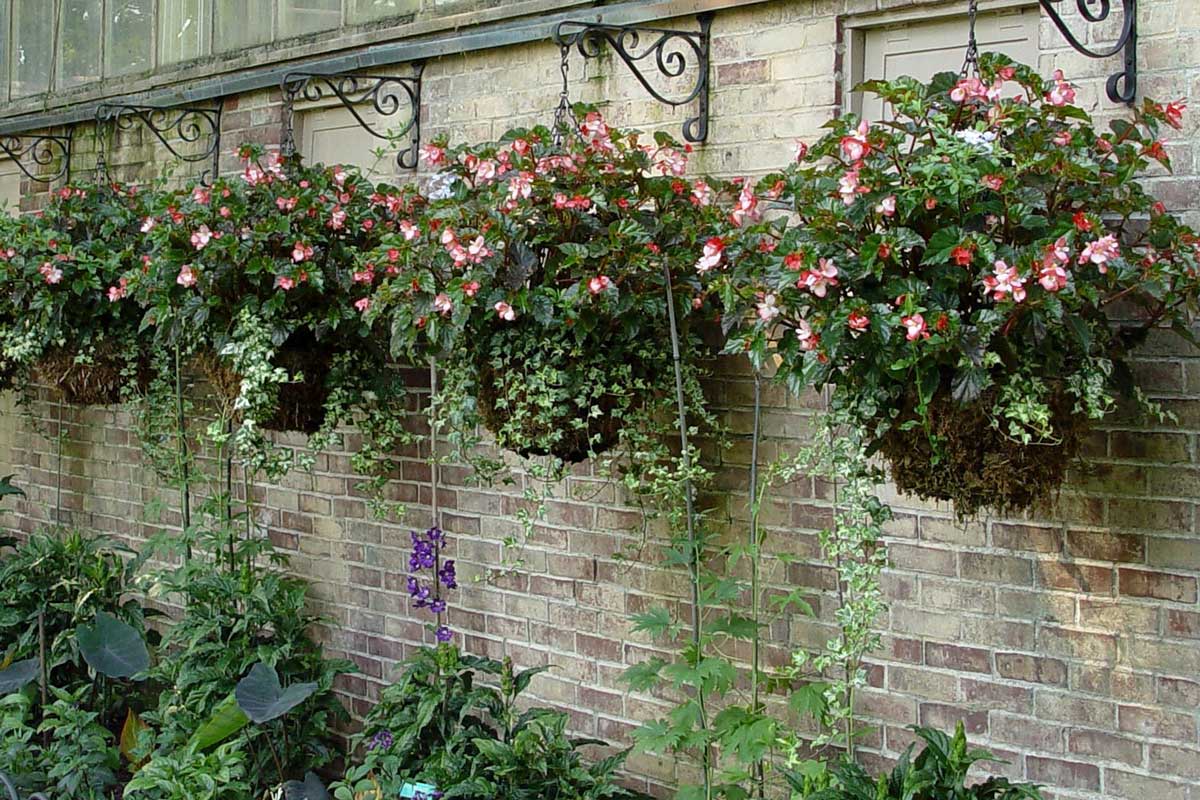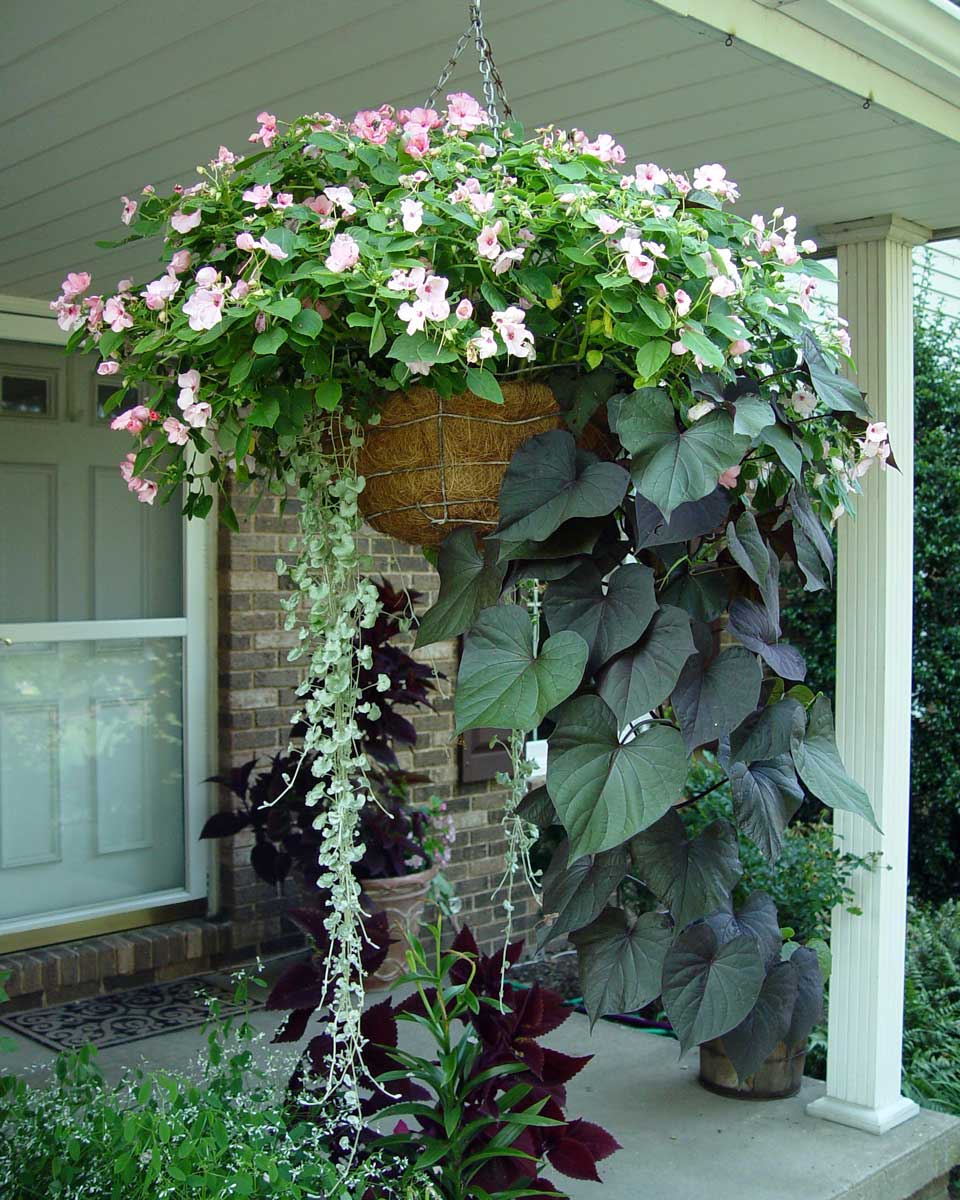Pot Stars: 8 Top Plants for Your Container Centerpiece
Here are eight worthy annual plants to consider for your outdoor container's leading role.
Hanging flower baskets are increasingly popular as a way to add eye-level color to decks and porches – without the fuss of digging, weeding and rabbit-fighting. Ready-made baskets can go from garden center to home hook with little time and effort, making them a trendy choice both for young gardeners with little time to dig gardens and aging gardeners looking for an easy, ready-made, pop of color.

Hanging baskets along a wall. George Weigel
Growing in hanging baskets has several advantages over in-ground gardening:
The key to basket success boils down to two main issues: watering and fertilizing. Because baskets have limited soil and are exposed on all sides to drying wind, they need more frequent watering than in-ground plants. The No. 1 cause of basket failure? Plants that wilted from lack of water.
Because all the watering quickly leaches nutrients from the planting medium, more regular fertilizer is needed to resupply the food bank.

Hanging basket with impatiens and sweet potato vine. George Weigel
Originally published on GreenViewFertilizer.com